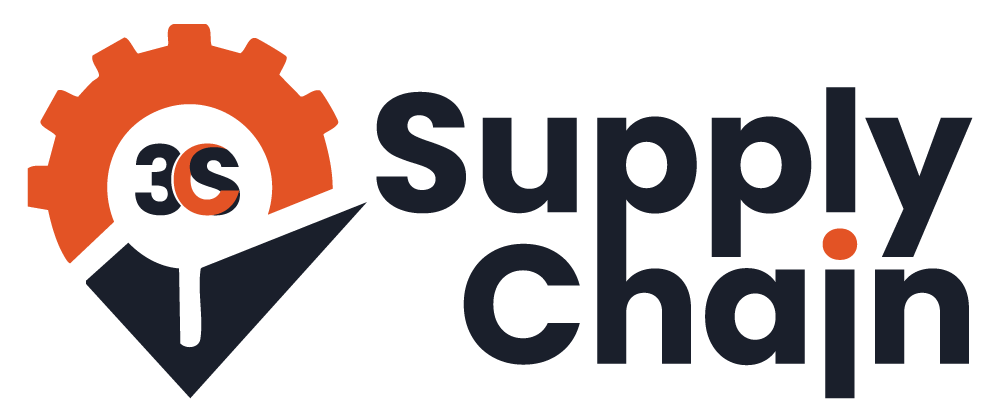A global retailer faced a $1.8M loss when a delayed shipment of holiday inventory left shelves empty, angering customers. Manual processes and poor visibility into carrier performance caused the chaos. By adopting freight management solutions with 3SC Supply Chain’s Transportation Management Systems, they optimized routes and tracked shipments in real time, ensuring 98% on-time deliveries and saving $1.5M. This story shows how Freight Management can turn logistical nightmares into operational wins. Let’s explore how modern freight strategies and tools keep supply chains moving smoothly in today’s fast-paced markets.
Why Freight Management Is Critical Today
Freight Management is the process of overseeing the transportation of goods, ensuring timely delivery within budget while coordinating carriers, suppliers, and logistics partners. It’s a cornerstone of supply chains, managing everything from shipment planning to regulatory compliance. In modern markets, where 60% of businesses face logistics disruptions annually (Gartner), freight management system tools are vital. They provide visibility, optimize costs, and enhance customer satisfaction. For example, 3SC Supply Chain’s Logistics & Transportation Analytics System helped a manufacturer reduce transport costs by 15% (3SC Case Study). With rising fuel prices and global trade complexities, effective freight strategies ensure resilience and competitiveness, making them essential for businesses of all sizes.
How Technology Boosts Freight Operations
Modern freight management systems leverage cutting-edge technology to transform supply chain logistics, making operations faster, cheaper, and more reliable. By automating tasks and providing real-time insights, these tools eliminate inefficiencies that plague traditional freight processes. Businesses adopting freight management solutions can achieve significant gains in productivity and customer satisfaction. Here’s how technology drives freight operations forward:
- Route Optimization: Artificial intelligence analyzes traffic, fuel costs, and delivery schedules to identify the shortest, most cost-effective routes. This reduces fuel consumption by up to 10%, saving thousands annually. For example, a distributor using 3SC Supply Chain’s Transportation Management Systems optimized cross-country routes, cutting transport costs by $150K (3SC Case Study). AI-driven routing minimizes delays and boosts efficiency.
- Real-Time Tracking: Live shipment monitoring improves on-time delivery rates by 20%. IoT sensors and GPS provide exact locations, alerting managers to delays or rerouting needs. A logistics firm using 3SC’s Fleet Management Tools rerouted shipments during a storm, saving $300K in potential losses (Gartner). Tracking ensures transparency and trust with customers.
- Data Analytics: Advanced analytics evaluate carrier performance, fuel usage, and delivery times, reducing inefficiencies by 15%. By identifying patterns, businesses can optimize resources. A retailer using 3SC’s Logistics & Transportation Analytics System pinpointed underperforming carriers, improving delivery speed by 10% (3SC Case Study). Analytics turn data into actionable insights.
- Automated Compliance: Managing tariffs, customs, and regulations manually risks costly errors. Automated tools streamline documentation, avoiding fines up to $100K. 3SC’s Transportation Management Systems ensured a manufacturer complied with international trade rules, saving $50K in penalties (Gartner). Automation keeps operations legal and efficient.
- Carrier Coordination: Syncing multiple vendors speeds operations by 25%. Automated platforms match shipments with reliable carriers, ensuring timely pickups. A logistics provider using 3SC’s Supplier Relationship Management Tools onboarded new carriers in hours, meeting a surge in demand (3SC Case Study). Coordination minimizes delays and strengthens partnerships.
These technologies, integrated through 3SC Supply Chain’s solutions, make freight management system tools essential for modern logistics, driving cost savings and operational excellence (Gartner).
Common Freight Management Pitfalls
Freight managers navigate a complex landscape where errors can lead to delays, higher costs, and unhappy customers. Without the right tools, these challenges can disrupt even the best-planned supply chains. Freight management solutions address these pain points, but understanding them is the first step to overcoming them. Here are the most common issues and how to fix them:
- Lack of Visibility: Without real-time tracking, blind spots cause 30% of delivery delays. Managers can’t react to issues like traffic or customs holds. A retailer struggled with late shipments until 3SC Supply Chain’s Real-Time Visibility Dashboard provided live updates, cutting delays by 25% (3SC Case Study). Visibility tools ensure proactive management.
- High Costs: Inefficient routes and poor load planning increase expenses by 20%. Manual processes exacerbate the problem. A distributor using 3SC’s Transportation Management Systems optimized load consolidation, saving $200K annually (Gartner). Route and load optimization curb unnecessary costs.
- Regulatory Fines: Non-compliance with trade or safety regulations costs firms $50K yearly. Manual documentation often misses updates. A manufacturer avoided $30K in fines using 3SC’s Logistics & Transportation Analytics System for automated compliance (3SC Case Study). Automation ensures adherence to rules.
- Carrier Misalignment: Poor communication with carriers delays shipments by 15%. Mismatched expectations disrupt schedules. A logistics firm synced operations with 3SC’s Supplier Relationship Management Tools, improving coordination and reducing delays by 20% (Gartner). Clear communication aligns partners.
- Manual Processes: Paper-based tasks lead to errors, wasting 10% of operational time. Invoices and schedules often mismatch. A retailer automated invoicing with 3SC’s Delivery & Proof of Delivery Tracking Software, saving 500 hours yearly (3SC Case Study). Automation eliminates human error.
By adopting freight management system tools like those from 3SC Supply Chain, businesses can turn these challenges into opportunities for growth and efficiency (Gartner).
Must-Have Features for Freight Software
A top-tier freight forwarding management system equips businesses with tools to manage complex logistics efficiently. The right features ensure scalability, transparency, and cost savings. Here’s what to look for when choosing freight software:
- Live Tracking: Real-time visibility into shipments achieves 99% accuracy. GPS and IoT enable instant updates on delays or reroutes. A distributor using 3SC Supply Chain’s Transportation Management Systems tracked international shipments, saving $200K (3SC Case Study).
- Route Planning: AI-driven routing saves 15% in transport costs by optimizing paths. It accounts for traffic and fuel prices. 3SC’s Fleet Management Tools helped a retailer cut delivery times by 10% (Gartner).
- Compliance Tools: Automated documentation reduces fines by 20%. Software manages tariffs and customs forms. 3SC’s Logistics & Transportation Analytics System ensured compliance, avoiding $25K in penalties (3SC Case Study).
- Analytics Dashboard: Data insights improve efficiency by 10%. Dashboards highlight performance metrics like carrier reliability. 3SC’s Real-Time Visibility Dashboard streamlined a logistics firm’s operations (Gartner).
- Carrier Integration: Seamless vendor onboarding speeds processes by 25%. Platforms connect carriers instantly. 3SC’s Supplier Relationship Management Tools simplified coordination for a manufacturer (3SC Case Study).
These features, offered by 3SC Supply Chain’s solutions, ensure a freight management system is reliable and future-ready (Gartner).
What’s Next for Freight Management
The future of Freight Management is being reshaped by innovative technologies that promise smarter, greener, and more efficient logistics. As supply chains grow more complex, staying ahead requires adopting these advancements. Here’s what’s on the horizon for freight operations:
- AI Optimization: Artificial intelligence will enhance routing and load planning accuracy by 20%. Predictive models anticipate disruptions like weather or demand spikes. A manufacturer using 3SC Supply Chain’s Logistics & Transportation Analytics System reduced costs by 18% with AI-driven routing (3SC Case Study).
- IoT Tracking: Internet of Things sensors will boost shipment visibility to 99%. Real-time data on temperature, location, and condition ensures quality. A pharma company used 3SC’s Real-Time Visibility Dashboard to monitor cold-chain shipments, saving $400K (Gartner).
- Green Logistics: Sustainable practices will cut emissions by 15%. Electric fleets and optimized routes reduce environmental impact. 3SC’s Fleet Management Tools helped a retailer lower carbon output by 12% (3SC Case Study).
- Blockchain: Secure, transparent documentation will reduce fraud by 10%. Blockchain ensures tamper-proof records for customs and contracts. 3SC’s Transportation Management Systems is exploring blockchain integration (Gartner).
- Automation: Robotic process automation will speed tasks like invoicing by 30%. This frees staff for strategic work. A logistics firm automated claims with 3SC’s Delivery & Proof of Delivery Tracking Software, saving 300 hours yearly (3SC Case Study).
3SC Supply Chain’s tools, like the Logistics & Transportation Analytics System, position businesses to embrace these trends, ensuring sustainable and competitive freight operations (Gartner).
Take Control of Your Freight Operations
Freight management solutions are key to efficient, cost-effective supply chains. By leveraging technology like freight management system tools, businesses save costs, boost visibility, and stay competitive. 3SC Supply Chain’s Transportation Management Systems empowers this transformation. Ready to optimize your freight? Visit 3SC Supply Chain or email contact@3scsupplychain.com today.

